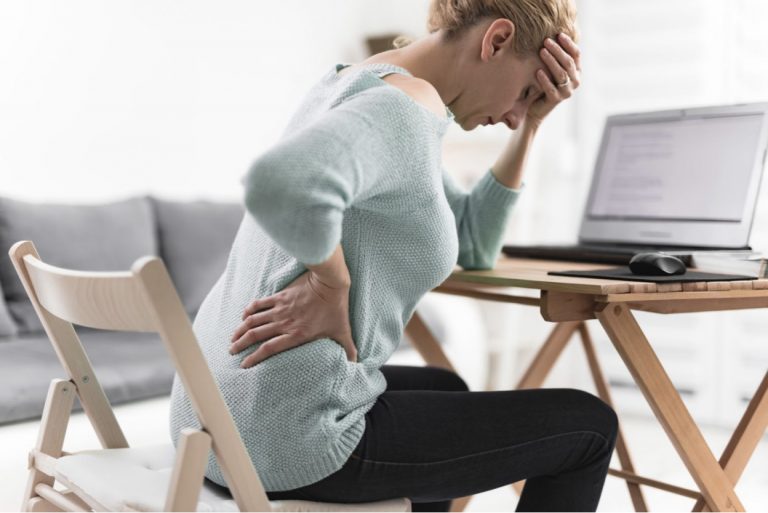Back pain is extremely common. Nearly everyone has suffered some degree of back pain, whether it’s minor soreness from overexerting yourself from work or exercise or a more serious injury.
There are a number of different ways to develop back pain, with injuries to back muscles and an injury or condition affecting spinal anatomy being the most common.
Although injured back muscles can be a source of pain and should be taken seriously, they often heal more easily compared to issues affecting the spine. No matter what the cause is, seeking a professional diagnosis from a qualified health professional is the best way to ensure a positive outcome.
To help you engage with your treatment on an active level, we’re providing the following information so you can learn about the causes of back muscle injuries and spine conditions. Additionally, it is also important to learn about the typical steps that lead to a diagnosis and what the most common treatment options are.
The BEST Health System team is here to help. If you have any questions or would like to learn more about your options for relief, please reach out.
Overview of your back muscles
By supporting and stabilizing the spine while enabling basic movement, the back muscles are critical to a healthy body.
Your back muscles consist of three groups:
- Intrinsic back muscles — These are the back muscles that connect to the spine. The three deep layers of back muscles include the semispinalis, multifidus, and rotatores that create balance, stability, and posture in the back.
- Superficial back muscles — These enable shoulder and neck movements and are near the cervical vertebrae in the upper spine.
- Intermediate back muscles — These back muscles help with the movement of the thoracic, or middle, spine.
The intrinsic back muscles are the most commonly associated with the term back muscles. This is because they travel up and down the spine, including in the lower, or lumbar, region. Due to the amount of stress these muscles withstand on a daily basis, back muscles are highly injury prone, often becoming strained or torn.
Overview of spinal anatomy
The spinal column consists of connected bone segments called vertebrae. The vertebrae protect the spinal cord as it travels from the brain to the rest of the body, branching out through small openings called foramina. The vertebrae are connected by facet joints and cushioned by flexible discs made of cartilage that allow the spine to bend and flex.
The spine is divided into three main areas:
- Cervical vertebrae — Consisting of the first seven vertebrae in the neck, labeled C1 to C7
- Thoracic vertebrae — Consisting of the next 12 vertebrae in the middle back, labeled T1 to T12
- Lumbar vertebrae — Consisting of the bottom five vertebrae in the lower back, labeled L1 to L5.
Issues affecting the spine can be due to natural age-related degeneration or injury, in addition to certain diseases and neurological conditions. Degenerative conditions are the most common and include arthritis, bulging discs, and herniated discs. These usually cause symptoms by interfering with nerve tissue that is packed in the spinal column.
Diagnosing and treating back pain
For patients with lower back pain or neck pain, it can sometimes be difficult to tell whether it is due to a strain or other injury to the back muscles, or if it is due to a spine condition such as a herniated disc. It can even be possible for both to be present at the same time.
In a healthy patient, muscle strains can improve on their own quickly with rest and basic treatments such as an ice pack and over-the-counter medication. A telltale sign of a spine condition is pain that is persistent, lasting longer than a few days to a week. Another is the presence of nerve-related symptoms such as tingling, numbness, and pain that shoots into the extremities.
Doctors should perform a thorough evaluation to determine whether back pain is being caused by injured back muscles, a spine condition, or a combination of the two. A very common test is the straight leg raise test, which can help determine whether there is a neuropathic issue in the lumbar spine that is causing pain.
Additional steps include:
- Review of medical history
- Questions about symptoms
- Hands-on examination including palpation of the intrinsic back muscles and deep layers to identify painful areas
- Posture and movement tests
If the diagnosis is a spine condition, initial treatment will still be nonsurgical. Over-the-counter anti-inflammatory medications, physical therapy, and pain management options such as injections are all highly effective in managing symptoms and improving back function.
Healthy lifestyle options are also important. In fact, strengthening the back muscles through regular low-impact exercise can help improve posture and stability, promoting spine health.
Surgery can become an option for spine conditions if weeks or months of treatment do not bring the relief necessary for a good quality of life. Thanks to advancements in the field of minimally invasive spine surgery, it is now possible to perform many spine procedures on an outpatient basis. This helps promote a shorter and less intensive recovery.
Learn more from the experts at BEST Health System today
If you are suffering from back pain as a result of chronic muscle strain or a spine condition and want to learn more about treatment options, contact BEST Health System today. Our team can help you develop a personalized care plan, whether you require pain management or minimally invasive spine surgery.
